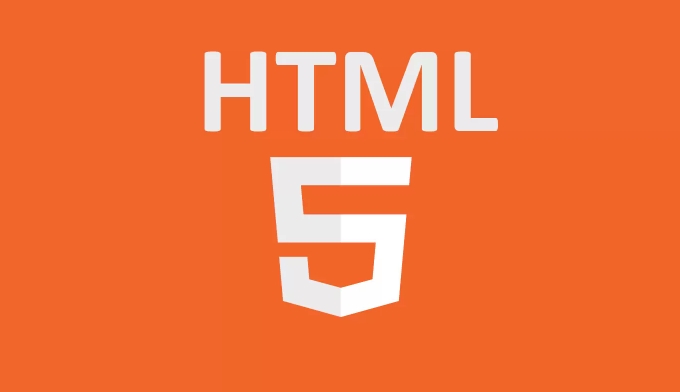如何處理HTML5畫布上的鼠標事件?
要正確處理HTML5 canvas上的鼠標事件,首先需給canvas添加事件監聽器,然後計算鼠標相對於canvas的坐標,接著通過幾何檢測判斷是否與繪製的對象交互,最後實現如拖拽等交互模式。 1. 使用addEventListener為canvas綁定mousedown、mousemove、mouseup和mouseleave事件;2. 利用getBoundingClientRect方法將clientX/clientY轉換為相對於canvas的坐標;3. 通過手動幾何計算(如矩形邊界或圓的距離公式)檢測鼠標是否懸停在繪製的圖形上;4. 維護一個包含所有圖形的對像數組,在鼠標事件中判斷選中並更新位置,結合redraw函數重繪畫面;必須始終手動追踪圖形狀態並在交互後重繪canvas,才能實現完整交互,這是一個從零構建但控制靈活的過程。

Handling mouse events on an HTML5 canvas requires a slightly different approach compared to regular DOM elements because the canvas is treated as a single element — all drawing happens within it, but the interactions must be manually mapped to positions in the drawing space.

Here's how to properly handle mouse events on a canvas:
1. Attach Event Listeners to the Canvas
First, get a reference to the canvas element and attach standard mouse event listeners such as mousedown , mousemove , mouseup , and mouseleave .

const canvas = document.getElementById('myCanvas'); const ctx = canvas.getContext('2d'); canvas.addEventListener('mousedown', handleMouseDown); canvas.addEventListener('mousemove', handleMouseMove); canvas.addEventListener('mouseup', handleMouseUp); canvas.addEventListener('mouseleave', handleMouseLeave);
2. Get Mouse Position Relative to the Canvas
The default clientX and clientY from mouse events are relative to the viewport, not the canvas. You need to convert them to coordinates relative to the canvas, especially if your canvas is positioned or scaled.
Use getBoundingClientRect() to get accurate positioning:

function getMousePos(canvas, evt) {
const rect = canvas.getBoundingClientRect();
return {
x: evt.clientX - rect.left,
y: evt.clientY - rect.top
};
}Now use this inside your event handlers:
function handleMouseMove(event) {
const mousePos = getMousePos(canvas, event);
console.log('Mouse at:', mousePos.x, mousePos.y);
}This is essential for detecting if the mouse is over a shape you've drawn.
3. Detect Interaction with Drawn Objects
Since the canvas doesn't track individual shapes, you have to manually check if the mouse is over a drawn object by using geometric checks.
For example, to detect if the mouse is over a rectangle:
function isInsideRect(mouseX, mouseY, rectX, rectY, width, height) {
return mouseX >= rectX && mouseX <= rectX width &&
mouseY >= rectY && mouseY <= rectY height;
}
// Usage in event handler
function handleMouseMove(event) {
const mousePos = getMousePos(canvas, event);
const hovering = isInsideRect(mousePos.x, mousePos.y, 50, 50, 100, 100);
console.log('Over rectangle:', hovering);
}For circles, use distance formula:
function isInsideCircle(mouseX, mouseY, centerX, centerY, radius) {
const dx = mouseX - centerX;
const dy = mouseY - centerY;
return Math.sqrt(dx*dx dy*dy) <= radius;
}You'll need to keep track of all drawn objects in an array or data structure to loop through them during hit detection.
4. Handle Common Interaction Patterns
Here's a practical example using drag-and-drop on a rectangle:
let isDragging = false;
let selectedShape = null;
const shapes = [
{ type: 'rect', x: 50, y: 50, w: 100, h: 80, color: 'blue' },
{ type: 'circle', x: 200, y: 100, r: 30, color: 'green' }
];
function handleMouseDown(event) {
const mousePos = getMousePos(canvas, event);
// Check shapes in reverse order (topmost first)
for (let i = shapes.length - 1; i >= 0; i--) {
const shape = shapes[i];
if (shape.type === 'rect') {
if (isInsideRect(mousePos.x, mousePos.y, shape.x, shape.y, shape.w, shape.h)) {
isDragging = true;
selectedShape = shape;
break;
}
} else if (shape.type === 'circle') {
if (isInsideCircle(mousePos.x, mousePos.y, shape.x, shape.y, shape.r)) {
isDragging = true;
selectedShape = shape;
break;
}
}
}
}
function handleMouseMove(event) {
if (!isDragging || !selectedShape) return;
const mousePos = getMousePos(canvas, event);
// Move the shape
if (selectedShape.type === 'rect') {
selectedShape.x = mousePos.x - selectedShape.w / 2;
selectedShape.y = mousePos.y - selectedShape.h / 2;
} else if (selectedShape.type === 'circle') {
selectedShape.x = mousePos.x;
selectedShape.y = mousePos.y;
}
// Redraw canvas
redraw();
}
function handleMouseUp() {
isDragging = false;
selectedShape = null;
}
function handleMouseLeave() {
isDragging = false;
selectedShape = null;
}
function redraw() {
ctx.clearRect(0, 0, canvas.width, canvas.height);
shapes.forEach(shape => {
if (shape.type === 'rect') {
ctx.fillStyle = shape.color;
ctx.fillRect(shape.x, shape.y, shape.w, shape.h);
} else if (shape.type === 'circle') {
ctx.beginPath();
ctx.arc(shape.x, shape.y, shape.r, 0, Math.PI * 2);
ctx.fillStyle = shape.color;
ctx.fill();
}
});
}
// Initial draw
redraw();Key Points to Remember
- The canvas does not inherently know about drawn content — you must track objects and their positions.
- Always use
getBoundingClientRect()for accurate mouse positioning. - Redraw the canvas after state changes (like dragging).
- For better performance with many objects, consider spatial indexing (like quadtrees) for hit detection.
- Touch events require similar handling using
touchstart,touchmove, etc., with touch coordinates.
Basically, you're building interaction logic from scratch, but once set up, it gives you full control over 2D graphics interactions.
以上是如何處理HTML5畫布上的鼠標事件?的詳細內容。更多資訊請關注PHP中文網其他相關文章!

熱AI工具

Undress AI Tool
免費脫衣圖片

Undresser.AI Undress
人工智慧驅動的應用程序,用於創建逼真的裸體照片

AI Clothes Remover
用於從照片中去除衣服的線上人工智慧工具。

Clothoff.io
AI脫衣器

Video Face Swap
使用我們完全免費的人工智慧換臉工具,輕鬆在任何影片中換臉!

熱門文章

熱工具

記事本++7.3.1
好用且免費的程式碼編輯器

SublimeText3漢化版
中文版,非常好用

禪工作室 13.0.1
強大的PHP整合開發環境

Dreamweaver CS6
視覺化網頁開發工具

SublimeText3 Mac版
神級程式碼編輯軟體(SublimeText3)
 將CSS和JavaScript與HTML5結構有效整合。
Jul 12, 2025 am 03:01 AM
將CSS和JavaScript與HTML5結構有效整合。
Jul 12, 2025 am 03:01 AM
HTML5、CSS和JavaScript應通過語義化標籤、合理加載順序與解耦設計高效結合。 1.使用HTML5語義化標籤如、提升結構清晰度與可維護性,利於SEO和無障礙訪問;2.CSS應置於中,使用外部文件並按模塊拆分,避免內聯樣式與延遲加載問題;3.JavaScript推薦放在前引入,使用defer或async異步加載以避免阻塞渲染;4.減少三者間強依賴,通過data-*屬性驅動行為、類名控制狀態,統一命名規範提升協作效率。這些方法能有效優化頁面性能與團隊協作。
 解釋html5` vs` '元素。
Jul 12, 2025 am 03:09 AM
解釋html5` vs` '元素。
Jul 12, 2025 am 03:09 AM
是塊級元素,適合佈局;是內聯元素,適合包裹文字內容。 1.獨占一行,可設置寬高和邊距,常用於結構佈局;2.不換行,大小由內容決定,適用於局部文本樣式或動態操作;3.選擇時應根據內容是否需獨立空間判斷;4.不可嵌套在內,不適合做佈局;5.優先使用語義化標籤以提升結構清晰度與可訪問性。
 HTML5視頻流技術和注意事項
Jul 14, 2025 am 02:41 AM
HTML5視頻流技術和注意事項
Jul 14, 2025 am 02:41 AM
要讓HTML5視頻流暢播放需注意三點:1.選擇合適視頻格式,如MP4、WebM或Ogg,並根據目標用戶選擇提供多個格式或單一格式;2.使用自適應碼率技術如HLS或DASH,結合hls.js或dash.js實現清晰度自動切換;3.合理設置預加載策略與服務器配置,如preload屬性、字節範圍請求、壓縮和緩存,以優化加載速度並減少流量消耗。
 HTML5表單中有哪些新輸入類型?
Jul 12, 2025 am 03:07 AM
HTML5表單中有哪些新輸入類型?
Jul 12, 2025 am 03:07 AM
HTML5introducednewinputtypesthatenhanceformfunctionalityanduserexperiencebyimprovingvalidation,UI,andmobilekeyboardlayouts.1.emailvalidatesemailaddressesandsupportsmultipleentries.2.urlchecksforvalidwebaddressesandtriggersURL-optimizedkeyboards.3.num
 使用HTML5畫布和遊戲API開發網絡遊戲
Jul 14, 2025 am 03:08 AM
使用HTML5畫布和遊戲API開發網絡遊戲
Jul 14, 2025 am 03:08 AM
HTML5Canvas是一個用於在網頁上繪製圖形和動畫的API,結合GameAPIs可實現功能豐富的網頁遊戲。 1.設置元素並獲取2D上下文;2.使用JavaScript繪製對象並實現動畫循環;3.處理用戶輸入控制遊戲;4.結合Gamepad、WebAudio、PointerLock和Fullscreen等API提升交互體驗;5.優化性能並管理資源加載以確保流暢運行。
 如何使用HTML5地理位置API訪問用戶的當前位置?
Jul 13, 2025 am 02:23 AM
如何使用HTML5地理位置API訪問用戶的當前位置?
Jul 13, 2025 am 02:23 AM
要獲取用戶當前位置,可使用HTML5的GeolocationAPI。該API在用戶授權後提供經緯度等信息,核心方法是getCurrentPosition(),需處理成功與錯誤回調;同時要注意HTTPS前提、用戶授權機制及錯誤碼處理。 ①調用getCurrentPosition獲取一次位置,失敗則觸發錯誤回調;②用戶必須授權,否則無法獲取,且可能不再提示;③錯誤處理應區分拒絕、超時、位置不可用等情況;④啟用高精度、設置超時時間等可通過第三個參數配置;⑤線上環境必須使用HTTPS,否則可能被瀏覽器限制
 說明HTML5中腳本的'異步”和' defer”屬性。
Jul 13, 2025 am 03:06 AM
說明HTML5中腳本的'異步”和' defer”屬性。
Jul 13, 2025 am 03:06 AM
async和defer的區別在於腳本執行時機。 async讓腳本並行下載且下載完立即執行,不保證執行順序;defer則在HTML解析完成後按順序執行腳本。兩者都避免阻塞HTML解析。使用async適用於獨立腳本如分析代碼;defer適合需訪問DOM或依賴其他腳本的場景。
 檢測特定HTML5功能的瀏覽器支持。
Jul 13, 2025 am 02:05 AM
檢測特定HTML5功能的瀏覽器支持。
Jul 13, 2025 am 02:05 AM
檢測瀏覽器是否支持HTML5特性可通過JavaScript運行時檢查或使用Modernizr庫實現。 1.使用原生JavaScript檢查特性,如'localStorage'inwindow或創建canvas元素並調用getContext方法;2.引入Modernizr庫自動檢測並在html元素添加類名及提供Modernizr對象調用;3.對不支持的功能可嘗試polyfill回退方案,但需權衡性能和功能完整性;最終應根據實際需求選擇合適方法,避免過度兼容或盲目假設用戶環境。







